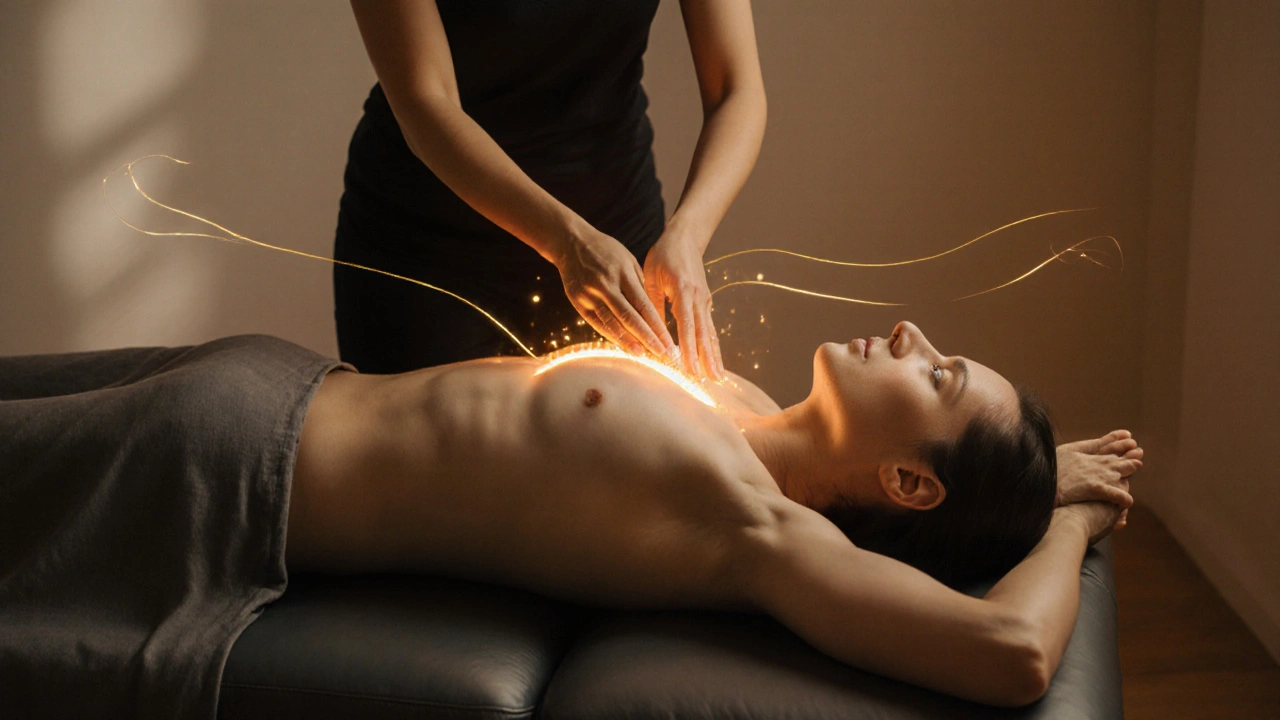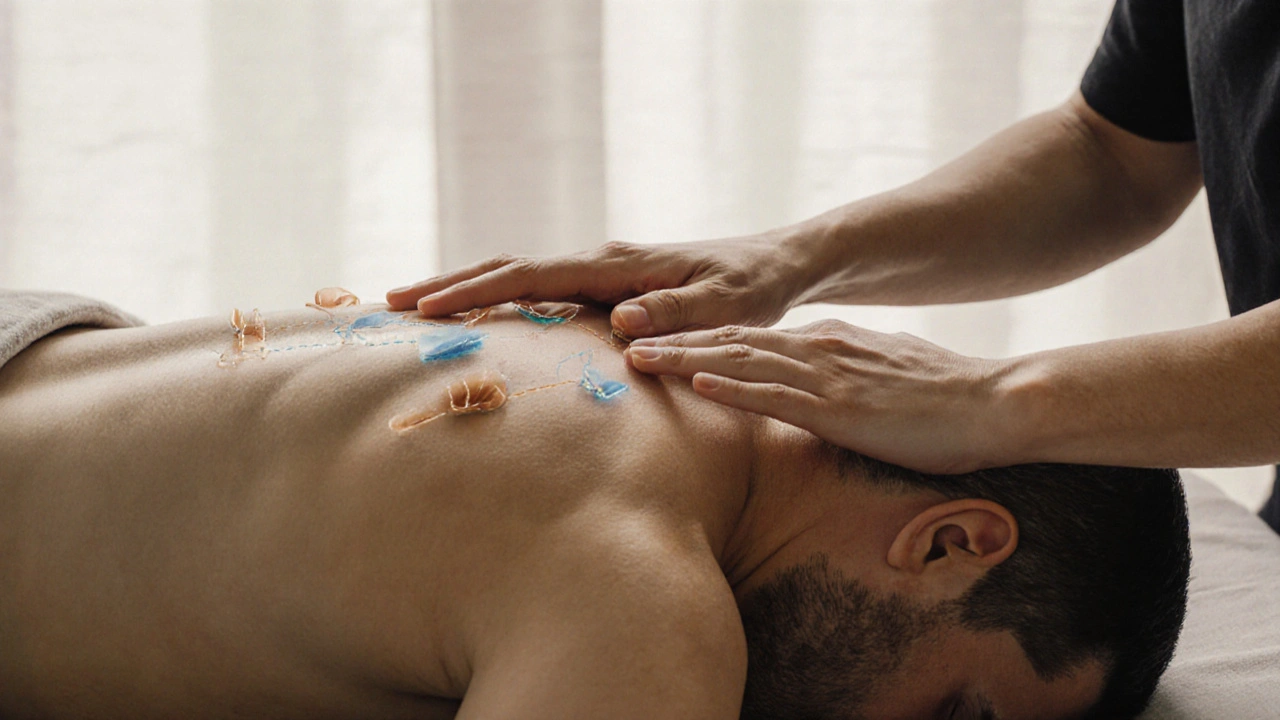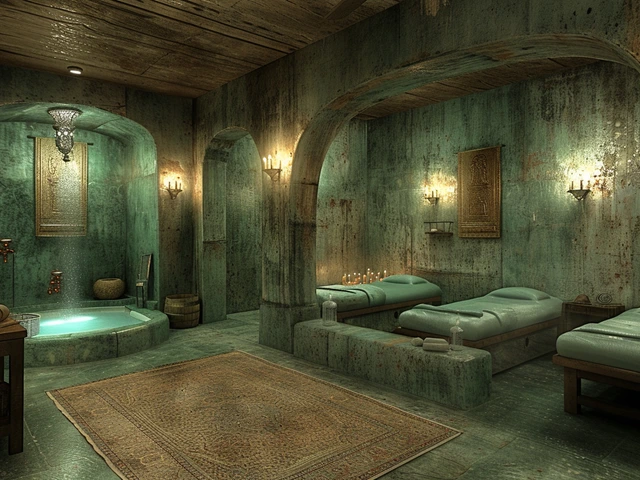The Power of Touch: How Polarity Therapy Works and Who It Helps

Polarity Balance Assessment Tool
How's your energy flow?
This assessment identifies potential energy blockages based on common polarity therapy symptoms. Results are for educational purposes only and don't replace professional medical advice.
Your Energy Assessment
Click the button above to see your results
Your results will appear here
Recommendations will appear after assessment
Most people think of touch as something comforting - a hand on the shoulder, a hug after a long day. But in polarity therapy, touch isn’t just emotional. It’s a tool to move energy through your body. Developed in the 1950s by Dr. Randolph Stone, a chiropractor, osteopath, and naturopath, polarity therapy blends ancient healing systems from Ayurveda, Traditional Chinese Medicine, and Western energy concepts. It doesn’t just treat symptoms. It tries to fix the flow of life force - called polarity - that runs through you.
What Is Polarity Therapy?
Polarity therapy is built on the idea that energy flows in patterns, like currents in the body. These patterns are shaped by five elements: earth, water, fire, air, and ether. Each one corresponds to different parts of your body, emotions, and even how you think. When these energies get stuck - from stress, injury, or old trauma - you feel it. Fatigue, pain, anxiety, or digestive trouble aren’t random. They’re signs your energy isn’t moving right.
Practitioners use gentle touch, movement, stretching, and sometimes sound or nutrition to restore balance. No needles. No drugs. No intense pressure. Think of it as energy massage, but with a clear map of where energy should flow. A session might start with light hand placements along your spine, then shift to rocking your limbs to release tension. Some therapists even use vocal toning - humming or chanting - to help clear blockages.
How Does It Work?
The core of polarity therapy is the belief that energy moves between positive and negative poles in your body. Your head is a positive pole, your feet are negative. Your front and back also have opposite charges. When this balance is off - say, you’re always anxious or stiff in your shoulders - energy gets stuck in one area. That’s where the therapist steps in.
They don’t guess where the blockage is. They use a technique called energy assessment. By lightly placing their hands on your skin, they sense temperature changes, resistance, or pulsing. These aren’t mystical sensations. They’re physical responses trained practitioners learn to recognize. A cold spot might mean stagnant energy. A tingling sensation could signal energy trying to move.
Once they identify the imbalance, they apply specific touch patterns. A slow, circular motion on your lower back might encourage earth energy to ground you. A light, quick tap along your arms might stimulate air energy to lift your mood. The goal isn’t to fix you - it’s to help your body remember how to heal itself.
What Happens in a Session?
A typical session lasts 60 to 90 minutes. You stay fully clothed, lying on a massage table. The therapist starts by talking - not to diagnose, but to understand your stress, sleep, digestion, and emotional state. They’re looking for patterns. Do you always feel tight in your chest when you’re overwhelmed? Do you get headaches after long meetings? These aren’t just symptoms. In polarity therapy, they’re energy signals.
Then comes the touch. The therapist uses five types of touch:
- Light touch: Fingertips on the head or feet to calm the nervous system.
- Deep touch: Gentle pressure on muscles to release stored tension.
- Rocking: Slow, rhythmic movement of limbs to free stuck energy.
- Stretching: Passive movements to improve energy flow through joints.
- Energy direction: Hands moving along your body without touching, guiding energy flow.
Some people feel warmth, tingling, or even a sudden rush of emotion - a memory, a sigh, tears. That’s normal. Polarity therapy doesn’t just move energy. It unlocks what’s been buried under it.
After the session, you might feel deeply relaxed. Or, sometimes, a little drained. That’s your body processing. Most people report better sleep, less pain, and a calmer mind within a few sessions.

Who Benefits Most?
Polarity therapy isn’t a cure-all. But it works well for people who’ve tried everything else and still feel off. If you’re tired all the time, even after sleeping, or you get headaches that don’t respond to medicine, it might help. People with chronic stress, anxiety, or unresolved trauma often find relief here. It’s also popular among those recovering from surgery or injury who need gentle movement without strain.
It’s not for everyone. If you’re looking for quick pain relief or want to fix a herniated disc with touch alone, this isn’t it. But if you’ve been told your pain is "all in your head" - and you know it’s not - polarity therapy offers a real way to explore what’s happening beneath the surface.
One client in Nashville, a nurse working 12-hour shifts, came in with constant lower back pain and insomnia. She’d tried physical therapy, acupuncture, and painkillers. Nothing stuck. After six polarity sessions, her pain dropped by 70%. But more importantly, she started sleeping through the night. "I didn’t just feel better," she said. "I felt like I remembered how to breathe."
How Is It Different From Other Therapies?
People often confuse polarity therapy with Reiki, massage, or chiropractic care. Here’s how it’s different:
| Feature | Polarity Therapy | Reiki | Massage Therapy | Chiropractic |
|---|---|---|---|---|
| Touch intensity | Light to moderate | Usually no touch, hands hover | Deep or firm pressure | Joint adjustments, audible pops |
| Focus | Energy flow, emotional release | Universal energy transfer | Muscle tension, circulation | Bone alignment |
| Tools used | Hands, movement, sound | Hands only | Oil, lotion, tables | Tools, tables, force |
| Duration of effects | Days to weeks, cumulative | Hours to days | Hours to a few days | Days, but often needs repeat visits |
| Emotional component | Strong - emotions often surface | Mild | Rare | Minimal |
Polarity therapy stands out because it doesn’t just treat the body or the mind. It treats the connection between them. It’s the only system that maps energy patterns to the five elements - and uses that map to guide every touch.

What You Should Know Before Trying It
There’s no license for polarity therapy in most U.S. states. That means anyone can call themselves a practitioner. Look for someone certified by the Polarity Energy Therapy Association (PETA) or trained under a school approved by the National Certification Board for Therapeutic Massage & Bodywork (NCBTMB). Ask about their training. How many hours? Who did they study with?
Also, don’t expect miracles. Most people need 4 to 6 sessions to feel lasting change. It’s not a one-time fix. Think of it like learning to walk again - your body has to relearn how to move energy. Some people feel shifts after the first session. Others take longer. That’s okay.
Cost varies. In Nashville, a session runs between $75 and $120. Some insurance plans cover it if the practitioner is also a licensed massage therapist. Always ask.
Can You Do It Yourself?
Yes - but not fully. You can’t replace a trained practitioner. But you can learn basic techniques to support your energy flow. Try this: every morning, sit quietly for five minutes. Place your right hand on your forehead. Place your left hand on your lower belly. Breathe slowly. Imagine energy flowing from your head down to your feet, like water moving through a river. Do this for a week. Many people report feeling calmer, more centered.
Another simple trick: walk barefoot on grass or sand for 10 minutes. Grounding your feet helps release excess energy. It’s a tiny form of polarity therapy - and it’s free.
Final Thoughts
Polarity therapy doesn’t promise to cure disease. But it does offer something rarer: a way to feel whole again. In a world that pushes us to do more, fix more, be more, it reminds us that healing isn’t always about force. Sometimes, it’s about listening - to your body, to your energy, to the quiet rhythm beneath the noise.
If you’ve ever felt like something’s off - not broken, just out of sync - polarity therapy might be the quiet answer you’ve been looking for.
Is polarity therapy safe?
Yes, polarity therapy is considered very safe. It uses gentle touch and no tools or drugs. It’s non-invasive and low-risk. People with pacemakers, pregnancy, or recent surgery should inform their practitioner, but most can still participate with minor adjustments.
Does polarity therapy have scientific backing?
There’s no large-scale clinical proof that energy fields exist as described in polarity therapy. But studies on similar practices - like therapeutic touch and energy healing - show measurable drops in stress hormones, improved sleep, and reduced pain perception. The effects may come from the nervous system calming down, not from moving invisible energy. Either way, the results are real for many people.
How long does it take to see results?
Some people feel calmer or more relaxed after one session. For lasting change - like reduced chronic pain or better sleep - most need 4 to 6 sessions spaced a week apart. Think of it like building muscle: small, consistent efforts create real change over time.
Can polarity therapy help with anxiety?
Yes. Many clients report a significant drop in anxiety after sessions. The gentle touch and focus on breath and energy flow activate the parasympathetic nervous system - the part of your body that tells you it’s safe to relax. For people with long-term stress or trauma, this can be deeply restorative.
Do I need to believe in energy to make it work?
No. You don’t need to believe in energy fields or chakras. Many skeptics report benefits because the therapy triggers relaxation responses in the body. The touch, the breathing, the quiet space - these are real, measurable interventions. Belief helps, but it’s not required.





